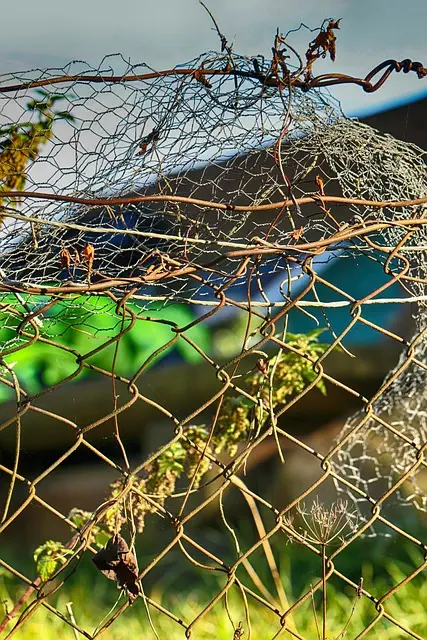Vietnamese Kratom leaves, derived from the Mitragyna speciosa tree, are celebrated for their unique alkaloid profiles and varied effects influenced by soil, climate, and cultivation techniques. These leaves are distinct due to their strain and vein color variations, with Malaysian strains being particularly potent. The humid climate and fertile soil of Malaysia enhance the quality and efficacy of Vietnamese Kratom grown there, affecting its aroma, flavor, and alkaloid levels. The agricultural practices in Vietnam emphasize sustainable cultivation in partially shaded environments to maintain the leaves' natural alkaloid content. Farmers harvest mature leaves early morning when alkaloid levels are peak, followed by careful sorting for quality control. Vietnam's clearer guidelines for kratom cultivation and trade position it as a key supplier of premium Vietnamese Kratom leaves globally. However, the legal and ethical landscape around kratom is complex, with a need for international cooperation and well-defined regulatory frameworks to address sustainability and misuse concerns, ensuring responsible trade and public health safeguards in response to the plant's increasing global demand.
explore the nuanced world of Malaysian Kratom buds, particularly the potent Vietnamese strains. Our article delves into the unique cultivation and harvesting process that sustains Vietnam’s burgeoning Kratom industry, offering insights into the meticulous techniques employed to yield high-quality leaves. We also navigate the complex legal landscape and ethical considerations surrounding Kratom’s status in Malaysia and its global implications. Join us as we uncover the intricate details of this natural phenomenon and its societal impact, emphasizing the importance of sustainable practices and regulatory clarity in the realm of herbal supplements.
- Unraveling the Potency of Vietnamese Kratom Leaves: A Deep Dive into Malaysian Strains
- The Cultivation and Harvesting Process: A Glimpse into the Livelihoods Sustaining Vietnam's Kratom Industry
- Navigating the Legal Landscape and Ethical Considerations Surrounding Kratom in Malaysia and Beyond
Unraveling the Potency of Vietnamese Kratom Leaves: A Deep Dive into Malaysian Strains

Vietnamese Kratom leaves have garnered attention in the botanical community for their unique alkaloid profiles and potent effects. Nestled within the lush landscapes of Southeast Asia, these leaves belong to the Mitragyna speciosa tree, a plant native to this region. The potency of Vietnamese Kratom is attributed to several factors, including soil composition, climate conditions, and cultivation practices. Unlike other strains, Vietnamese Kratom leaves exhibit distinct properties, which can vary in effect from stimulating to soothing, depending on the strain and vein color.
In Malaysia, the cultivation of Kratom is a nuanced endeavor, with strains like Vietnam Kratom Leaves being carefully nurtured to maintain their efficacy and quality. The Malaysian environment, characterized by its humid climate and fertile soil, provides an ideal setting for these trees to thrive. Connoisseurs often remark on the subtle yet significant differences in aroma, flavor, and alkaloid concentration found in Malaysian strains compared to those cultivated elsewhere. The Malaysian climate, in particular, is believed to influence the alkaloid content within the leaves, contributing to the strain’s potency and efficacy. This makes the Malaysian strains a subject of interest for researchers and consumers alike, as they explore the diverse effects and benefits that Kratom can offer.
The Cultivation and Harvesting Process: A Glimpse into the Livelihoods Sustaining Vietnam's Kratom Industry

In the verdant landscapes of Vietnam, the cultivation and harvesting of Kratom leaves—commonly known as Vietnamese Kratom leaves—form a vital part of the local economy. The process begins with the meticulous selection of seeds from high-quality strains to ensure the continued potency and desirability of the final product. Farmers in regions such as Central Highlands and Northern areas carefully nurture these plants, often starting from seedlings, under conditions that optimize their alkaloid content. The trees are typically grown in shaded areas to protect them from harsh sunlight, which can degrade the alkaloid profile. This cultivation method also mimics the natural growing conditions of Kratom in its native habitats, ensuring a product as close to nature as possible.
As the leaves mature, they undergo a careful harvesting process that is both sustainable and labor-intensive. Workers handpick the matured leaves at their peak potency, often during the early morning hours when the alkaloid content is most concentrated. The leaves are then carefully sorted by size and quality to further ensure the end product’s consistency and purity. This selective approach not only maintains the integrity of Vietnam’s Kratom industry but also supports the livelihoods of numerous families involved in its cultivation. The dedication to maintaining traditional farming practices, combined with modern knowledge of Kratom’s alkaloid profile, has positioned Vietnam as a significant player in the global market for high-quality Kratom leaves.
Navigating the Legal Landscape and Ethical Considerations Surrounding Kratom in Malaysia and Beyond

In the complex legal and ethical landscape that surrounds kratom, a clear understanding is paramount for both consumers and producers. Kratom, a plant native to Southeast Asia, has gained attention for its various effects, which can range from pain relief to mood enhancement. Within Malaysia, the legal status of kratom leaves and their derivatives remains ambiguous, with regulations varying by state. This inconsistency creates challenges for stakeholders attempting to navigate the laws responsibly. Internationally, countries like Vietnam have established clearer guidelines regarding the cultivation and trade of kratom leaves, which are locally referred to as ‘kaku’. The ethical considerations surrounding kratom’s use extend beyond legal classifications, encompassing issues of sustainability in harvesting practices and the potential for misuse or dependency. As such, it is crucial for policymakers, researchers, and users to engage with these complexities to ensure the responsible stewardship of kratom resources and the safeguarding of public health. The ethical implications are further compounded by the global demand for kratom products, which has led to significant exportation from countries like Vietnam, where the cultivation of kratom leaves is regulated but permissible under certain conditions. This dynamic highlights the importance of international cooperation and clear regulatory frameworks to manage the trade and ensure ethical practices are upheld across borders.
In conclusion, the exploration of Malaysian Kratom buds—particularly those from Vietnamese origins—reveals a complex interplay between agricultural practices, market demands, and regulatory frameworks. The meticulous cultivation and harvesting processes not only sustain the livelihoods of many in Vietnam but also contribute to the global supply of Kratom leaves, which are highly sought after for their unique alkaloid profiles. As the demand for Vietnamese Kratom leaves continues to rise, it is imperative for policymakers to consider the legal and ethical implications surrounding their production and distribution. The insights gained from this study underscore the importance of sustainable farming methods and responsible consumption to ensure the longevity and integrity of the Kratom industry in Malaysia and its neighboring regions.






